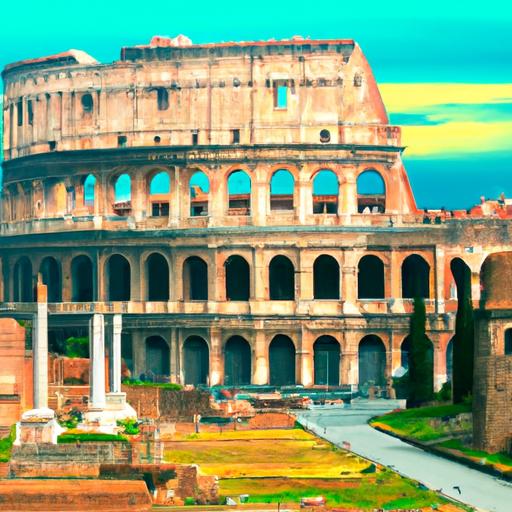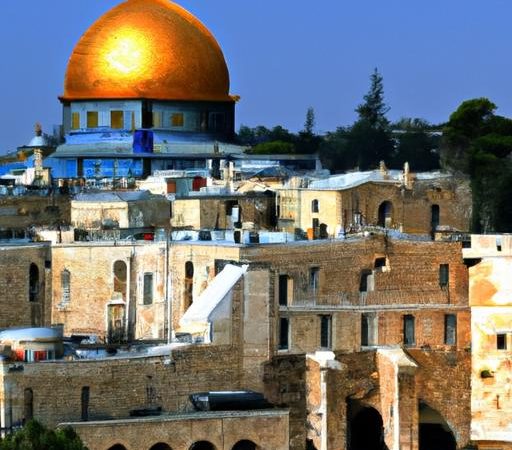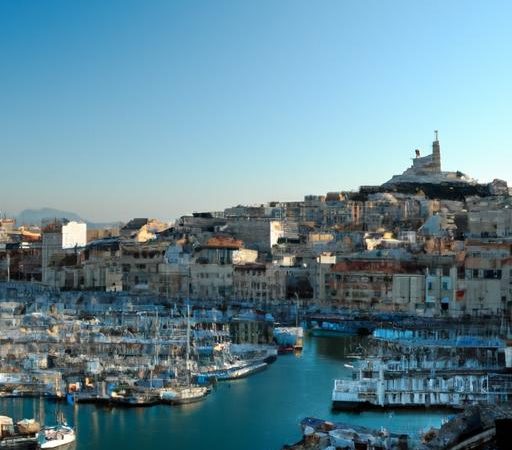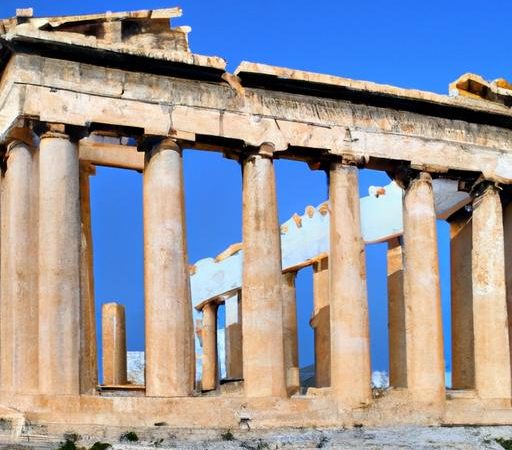Rome’s History: The Eternal City


– What are some must-see historical sites in Rome for visitors interested in its history
Rome’s History: The Eternal City
Introduction:
Rome, the capital city of Italy, is often referred to as the “Eternal City” due to its rich history that spans over 2,800 years. From the legendary foundation by Romulus and Remus to the powerful Roman Empire, Rome has played a significant role in shaping Western civilization. In this article, we will explore the fascinating history of Rome, its iconic landmarks, and the influence it has had on the world.
The Foundation of Rome:
According to legend, Rome was founded in 753 BC by Romulus and Remus, twin brothers who were raised by a she-wolf. Romulus eventually killed Remus in a fit of rage and named the city after himself. Rome started as a small settlement on the Palatine Hill and eventually grew into a powerful empire that controlled most of Europe, North Africa, and the Middle East.
The Roman Republic:
In 509 BC, Rome became a republic after overthrowing its last Etruscan king. The Roman Republic was a period of great expansion and conquest, with Rome conquering neighboring territories such as Greece, Spain, and Gaul. The Roman Senate, composed of wealthy landowners, played a significant role in governing the republic.
Key Facts:
- Rome was founded in 753 BC by Romulus and Remus
- Rome became a republic in 509 BC
- The Roman Senate governed the republic
The Roman Empire:
In 27 BC, Rome transitioned from a republic to an empire with the rise of Emperor Augustus. The Roman Empire reached its peak in the 2nd century AD under Emperor Trajan, who expanded Rome’s territories to their greatest extent. Rome became a melting pot of cultures, with people from all over the empire settling in the city.
Key Facts:
- Rome became an empire in 27 BC
- Emperor Trajan expanded Roman territories
- Rome became a cultural melting pot
Iconic Landmarks of Rome:
Rome is home to some of the world’s most famous landmarks that reflect its rich history. From the Colosseum to the Roman Forum, these sites are a testament to Rome’s power and influence. Other must-see landmarks include the Pantheon, the Vatican City, and the Trevi Fountain.
Top Landmarks:
| Landmark | Description |
|---|---|
| Colosseum | An ancient amphitheater where gladiator fights were held |
| Roman Forum | The center of ancient Roman political and social life |
| Pantheon | A well-preserved temple dedicated to the Roman gods |
The Legacy of Rome:
Rome’s legacy can be seen in modern architecture, law, language, and culture. The Roman Empire laid the foundation for Western civilization, with its influence felt in every aspect of society. The concept of citizenship, the rule of law, and classical architecture were all inherited from Rome.
Conclusion:
Rome’s history as the Eternal City is a testament to its enduring legacy and influence on the world. From its humble beginnings as a small settlement to the powerful Roman Empire, Rome has left an indelible mark on Western civilization. By exploring the history and landmarks of Rome, we can gain a better understanding of our past and appreciate the contributions of this ancient city.
Rome’s History: The Eternal City
Rome, also known as the “Eternal City,” is a place with a rich and fascinating history. It is a city that has stood the test of time, surviving wars, invasions, and natural disasters. From the early days of the Roman Republic to the modern-day capital of Italy, Rome has played a significant role in shaping western civilization. In this article, we will dive into the history of Rome and its rise to becoming the “Eternal City.”
Origins of Rome
The origins of Rome can be traced back to the 8th century BCE when it was a small agricultural village on the banks of the Tiber River. Legend has it that the city was founded by twin brothers Romulus and Remus, who were raised by a she-wolf. According to the legend, Romulus killed his brother and named the city after himself.
In reality, Rome was founded by Latin tribes, and over time, it grew in power and influence. Due to its central location on the Italian peninsula, Rome became an important trade hub and a melting pot of cultures. The city’s military might and its strategic location played a significant role in its expansion and dominance over neighboring territories.
The Roman Republic
Around 509 BCE, Rome became a republic, with a government led by elected officials and senators. This period, known as the Roman Republic, saw the city solidify its power and expand its territories. It also saw the rise of legendary figures such as Julius Caesar and Cicero, who left their mark on the city’s political and cultural landscape.
During this time, Rome also adopted many of its institutions, laws, and cultural practices, which continue to influence western societies to this day. It was also during this period that Rome faced several significant challenges, including wars with neighboring kingdoms and internal conflicts, which eventually led to the fall of the republic.
The Rise of the Roman Empire
The decline of the Roman Republic paved the way for the rise of the Roman Empire. Under Julius Caesar’s rule, who declared himself a dictator, and his successor Augustus, Rome became the dominant superpower in the Mediterranean region. The empire saw significant expansion, with territories stretching from the British Isles to Egypt.
The Roman Empire brought about a period of relative peace and stability, known as the Pax Romana. This era saw a flourishing of art, literature, and architecture, with iconic structures such as the Colosseum, the Pantheon, and the aqueducts being built. Rome also became a center of trade, commerce, and learning, attracting people from all over the world.
Fall of the Roman Empire
Despite its power and prestige, the Roman Empire faced several challenges in the 3rd and 4th centuries. Economic and military problems, along with political instability, led to the empire’s gradual decline. In 476 CE, Rome fell to barbarian invasions, and the Western Roman Empire collapsed.
However, the Eastern Roman Empire, also known as the Byzantine Empire, continued to thrive in Constantinople (present-day Istanbul), until it too fell in 1453 CE. The fall of the Roman Empire marked the end of classical antiquity and the beginning of the Middle Ages.
Modern-Day Rome
After the fall of the Roman Empire, the city of Rome faced an era of struggles and decline. It was not until the late 19th century that Rome became the capital of a unified Italy. Under the ruling of King Victor Emmanuel II, the city underwent significant urban development, with new buildings, roads, and monuments being built.
Today, Rome is a bustling and vibrant city, with a perfect blend of ancient and modern influences. It is home to some of the world’s most iconic landmarks, such as the Vatican City, the Trevi Fountain, and the Spanish Steps. The city attracts millions of visitors every year, with its rich history, culture, and cuisine.
Benefits and Practical Tips for Visiting Rome
Visiting Rome can be a life-changing experience for anyone interested in history, art, and culture. Here are some practical tips to make the most out of your trip to the Eternal City:
1. Plan your itinerary ahead of time to make the most of your visit. Rome has a vast array of attractions, so prioritize the must-sees.
2. Consider purchasing a Roma Pass, which allows you to access various museums and monuments while also providing free public transportation.
3. Wear comfortable shoes and clothing as you will be walking a lot and may need to cover up when visiting religious sites.
4. Don’t forget to try traditional Roman dishes such as carbonara, cacio e pepe, and gelato.
5. Take advantage of free entry days to museums and attractions, usually on the first Sunday of each month.
Conclusion
Rome’s history is not just any other city’s history. It is the story of a city that has impacted the world in profound ways, from its ancient republic, mighty empire to its present-day cultural and political influence. The city’s resilience and ability to reinvent itself speak volumes of its “Eternal City” nickname. Rome is a place that every history buff or traveler must visit to truly appreciate its rich and enduring legacy.





